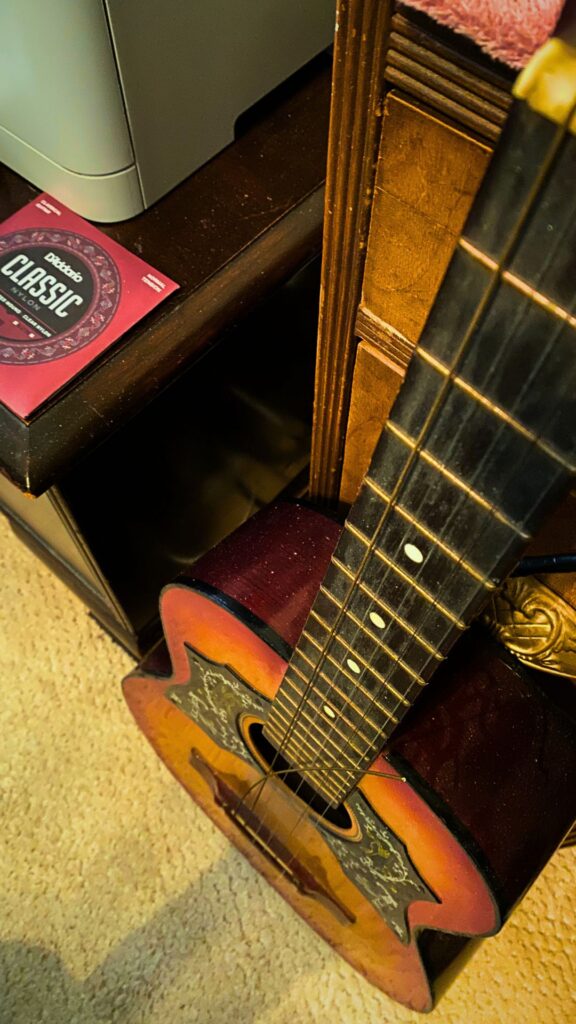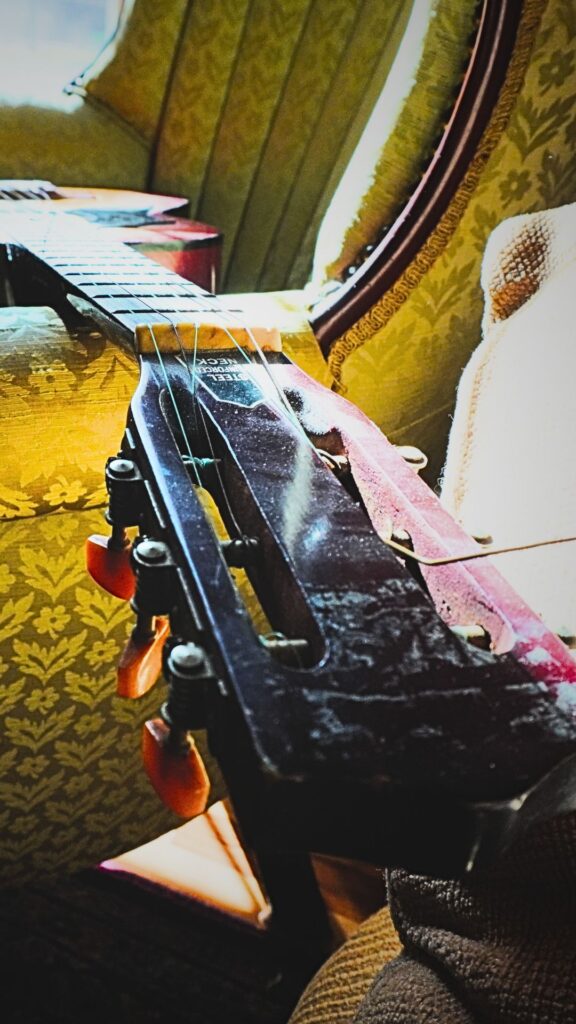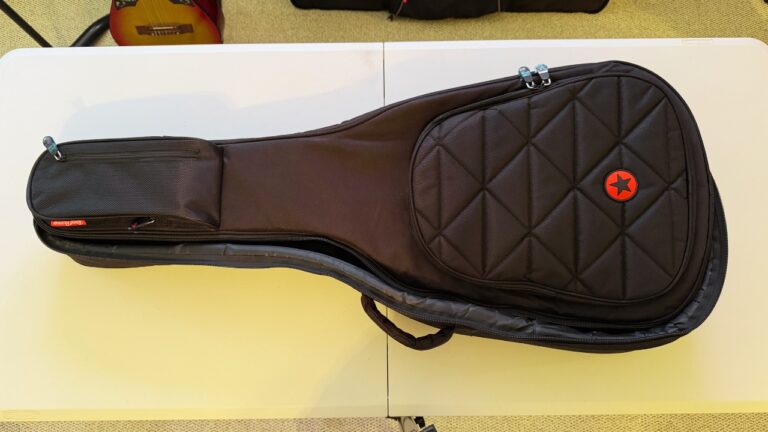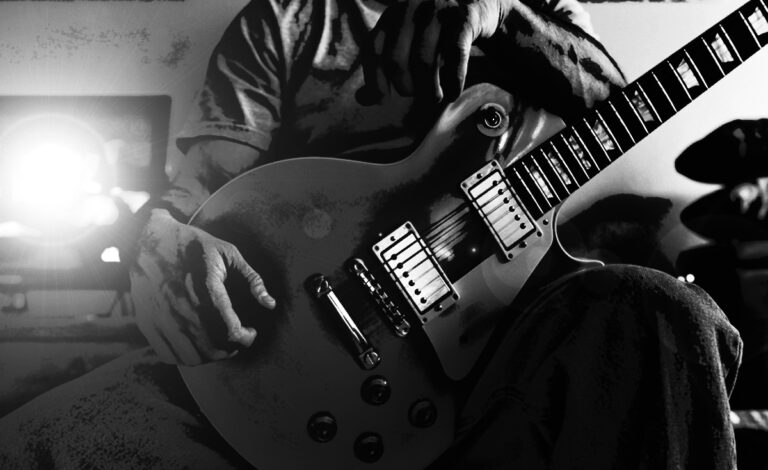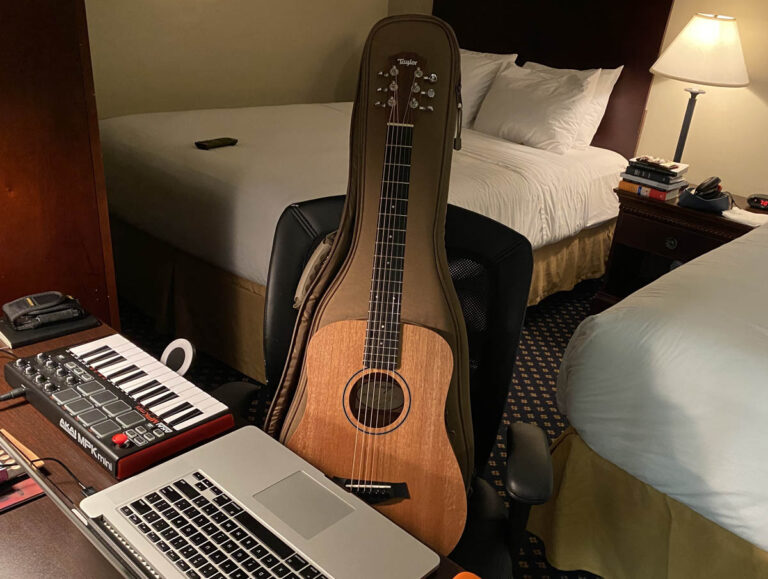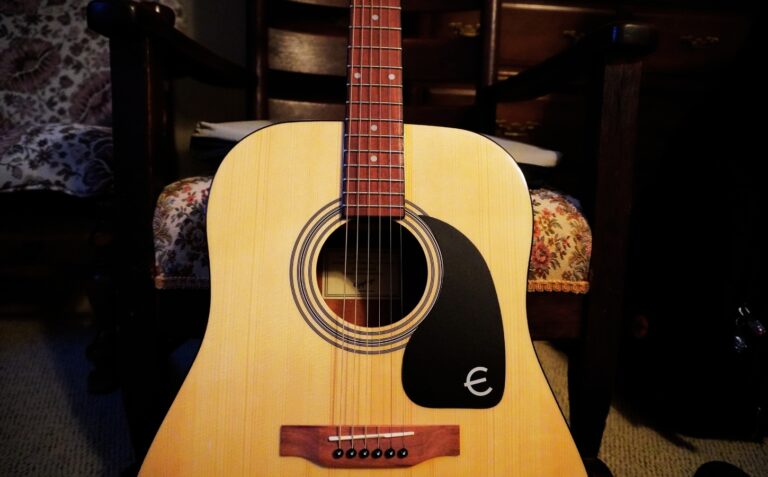Attempting a Salvation Army Guitar Rescue
You know, just because a guitar was purchased at a pawn shop, Goodwill Center, or in this case, the Salvation Army, doesn’t necessarily mean it’s not capable of producing halfway decent music.
Especially, once you give it a little bit of love in the form of giving it a good cleaning, polishing, providing it with a new set of strings… The results might just surprise you in the end, as it did me…
As it turns out, my brother purchased a guitar from The Salvation Army downtown. He just wanted a guitar to have around on occasion, but isn’t really that invested in learning how to play it. It cost only $8.99. Kind of hard to pass up, even if all he wanted to do was hang it on the wall, or something…
Turns out, this guitar is a Sears & Roebuck 559 – 1250 acoustic guitar. I never even knew that Sears used to sell guitars back-in-the-day… It appears that they sold quite a few different models, and some pretty good ones at that. This is not a post about Sears guitars, so please, feel free to do some of your own research if you feel so inclined. I think you’ll be just as surprised as I was (unless, of course, you already were aware)…
Quick Description…
This Sears & Roebuck 559 – 1250 acoustic guitar is a model produced by Sears, Roebuck & Co. It (says it) features a dreadnought body shape, which is known for its larger size and deep sound. But I’m leaning more towards it having a parlor-guitar kind of shape to it, because its quite small and isn’t too awfully loud, but fairly adequate…
The guitar is constructed with a spruce top, commonly used for its strength and tonal qualities, and mahogany back and sides, which contribute to a warmer tone (string dependent). The 559 – 1250 has a standard scale length and a neck designed for general playability.
The fretboard is likely made of a common material such as rosewood, though specific details may vary. This guitar was marketed as a mid-range, affordable instrument during its time of production, aimed at amateur and intermediate players. It was sold primarily through Sears catalogs and stores. The model is no longer in production, making it a vintage (economical vintage) item that may be of interest to collectors or players seeking older instruments.
So let’s get started with the challenges that lay ahead of me…
The Story Behind the Old Strings
The strings that were on the guitar…. Well, I’m not sure you could call those guitar strings. I mean, at first glance, it just look like and old child’s guitar, or some kind of toy guitar. But, the closer you look, the more suspicious things got.
For example, there were a few strings that appeared to be regular guitar strings, like the ball ends were present on a couple of the metal strings; however, there was mixture of strings present on the guitar. And this mixture was in the wrong combination.
For example, the second string was a metal string in between two nylon strings. Also, I’m not sure that particular string was a real guitar string. There was no ball end, and it just didn’t feel like a guitar string – was very difficult to take off without cutting pieces at a time off. The nylon strings felt more like fishing line. And finally, it was impossible to tune it with the strings that were on it when it was purchased…
Wasn’t Exactly Sure Which Strings To Buy?…
I wound up buying a set of D’Addario Classic Nylon strings that almost cost as much as the guitar, roughly $6.95, or so. Some might say, “Why bother?” And I understand, but I was determined to make my brother’s new purchase a playable guitar – no matter what…
In the above video, you will hear me make the remark that, “I’m not sure these metal strings should’ve been on the guitar at all;” however, I said this because this guitar is not built to take the string pegs as are most acoustic guitar that take metal strings. And, as it turns out (i.e. after some “Googling”), classical guitar bridges can take strings with ball ends and without. The D’addarios that I’ve now put on this guitar, do not have ball ends and have to be tied at the bridge end. To be perfectly honest, this is the first time, I’ve ever put on such a set of guitar strings. It certainly plays MUCH better having changed out the strings (night and day better)…
All of this being said, at the time of this writing, I certainly DO NOT consider myself an expert on ALL parts of a guitar, nor ALL types of guitars that are out there. I’m only speaking from my personal experience. Nor, am I anything close to what is referred to as a, “Guitar Tech.” I’ve, unfortunately, been too lazy through out my guitar playing days, and have always left the guitar maintenance up to my local retailer. I’m hoping in my later (senior) years that this changes, and I start behaving like a REAL Student of the guitar (and other instruments)… Time will tell (or has it already…I don’t know)…
Cleaning the Guitar
I performed a very minimal “rescue attempt” with this guitar. All I did was: remove and replace the strings, take apart and clean the tuners on the head stock, use “goo-gone” to remove some old (what appeared to be) adhesive on the headstock (perhaps from another old sticker), vacuum and brush out the inside sound hole area, and give the whole guitar a good polishing.
To do this, I purchased a generic polishing kit, the Dunlop Formula 65 Polishing Kit, from my local Guitar Center. This kit contains a guitar polish and cleaner (for the body mostly), a lemon based “Cream of Carnauba” for the fretboard, and a 100% cotton, yellow polishing cloth. This was the first time I had ever used such a kit (shameful I know)…
Conclusion
I will say, that finally tackling a little bit of guitar maintenance on my own, I’m more motivated to continue learning more. Then again, I haven’t even really scratched the surface of performing any kind of real make over on a guitar. So, maybe I don’t really realize what I’m asking for… I mean, with this guitar I didn’t remove and / or replace the bridge, the nut, or any of the frets…
The guitar also doesn’t have a truss rod to adjust. I.E. there are many more aspects of guitar maintenance that, if I had tried them, I might have ruined the guitar, considering my limited experience. I don’t trust myself enough yet.
All I know is, I will no longer shy away from this important part of being a well-rounded guitar player (or enthusiast) but will probably only perform serious maintenance and / or repair tasks on very low end guitars. And, I still have a couple lying around that could serve as great “guitar test dummies.”…
Until Next Time!


